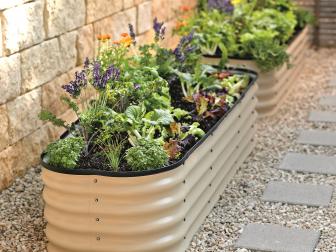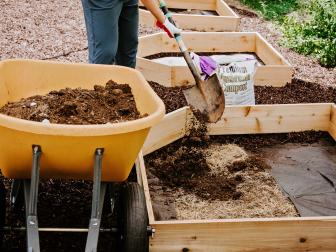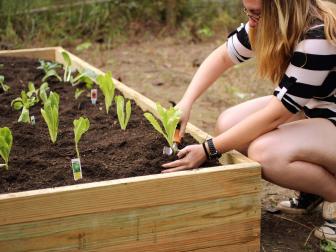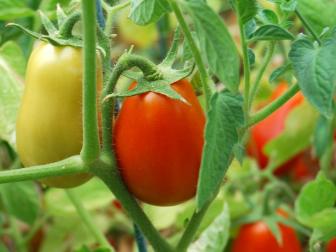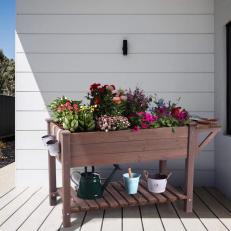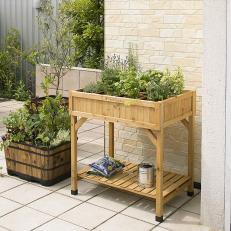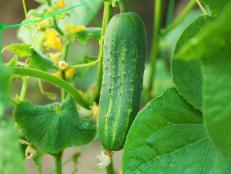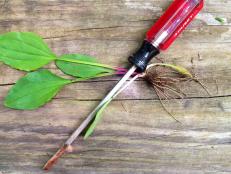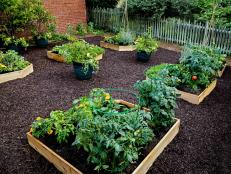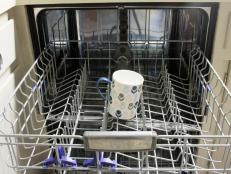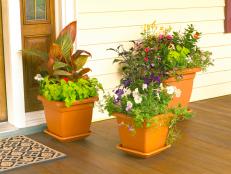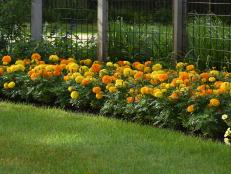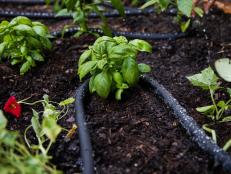Tips for a Raised-Bed Vegetable Garden
Gardening with raised beds takes very little space and is also a great solution for areas with poor native soil. Start raised-bed gardening with these expert tips.
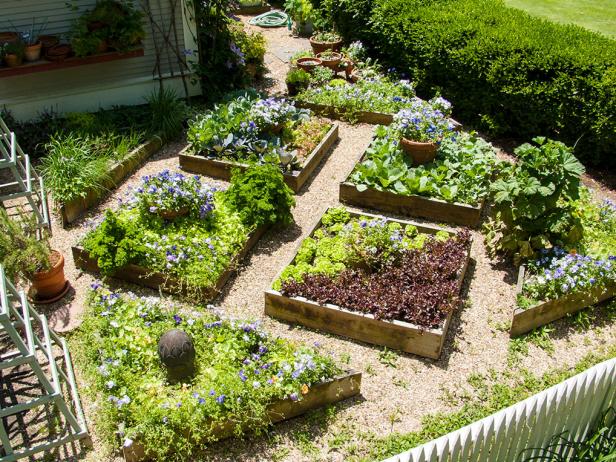
Hortus, Ltd./P. Allen Smith
Garden designer P. Allen Smith incorporated formal raised vegetable beds into the landscape at his Garden Home in Little Rock.
Raised-bed gardening is a great way to grow vegetables — especially if the native soil is poor or compacted, or has poor drainage. And there's no bending over to pull weeds or harvest vegetables.
Benefits of Gardening With Raised Beds
These elevated planting areas offer numerous advantages over in-ground gardens.
With raised beds, you have ultimate control over soil composition. You can customize the soil blend in your raised garden bed design to be exactly what your crops crave.
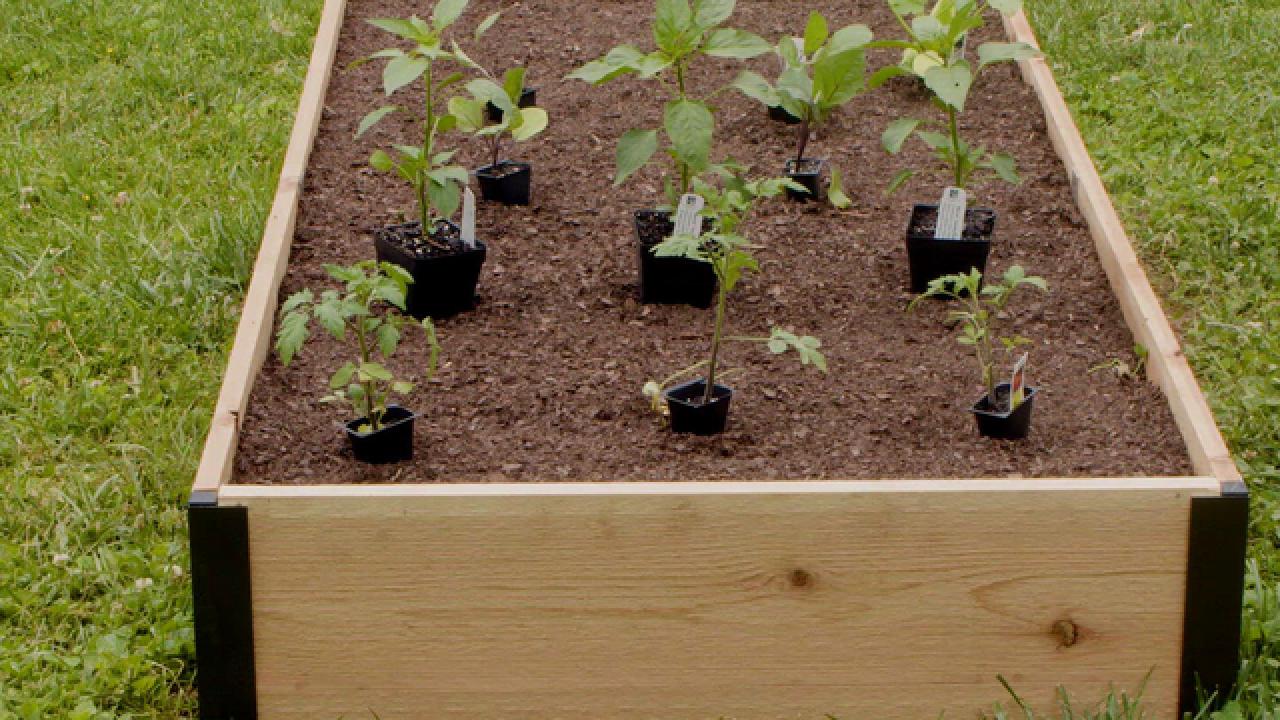
With a raised-bed garden, you can avoid dealing with difficult native soil, which is a gift when the native blend is hard clay or shale and tough to dig. Soil in raised beds drains better, which means wet weather won’t stall — or rot — crops.
In a raised bed, soil warms earlier in spring, so you can start planting sooner. This is particularly helpful in colder zones and in spots where the sun doesn’t strike soil in early spring.
Most raised-bed garden designs have defined paths, which means no one is walking on planting areas, compacting soil and giving plant roots a tough time.
Choosing Raised-Bed Location and Size
Best Bed Location
Choose a location that gets at least 6 hours of direct sunlight daily, preferably more. If the site is not level, it will need to be leveled before building your raised bed. Ideally, the site will not be shaded by trees or have competition from tree roots in the soil. Remove grass in the location before adding soil to the bed.
Ideal Raised-Bed Width
The ideal width of a raised bed is 3-4 feet so that veggies will be within arm's reach from either side. If you're siting a raised bed against a fence, wall or other backdrop, the width should be narrower so you can reach to the back of the bed. The ideal length of the bed is limited only by your space and materials.
25 Raised Garden Bed Ideas 26 Photos
Discover different types of raised garden bed styles and flower bed styles that will inspire you to create your own orderly garden space.
Make sure paths between raised beds are wide enough to permit easy access with a wheelbarrow or garden cart. If paths are grass, you’ll need to be able to mow through that space. Do a dry run with your mower to make sure you have ample room.
Raised-Bed Soil and Drainage
Drainage in a raised bed is superior to that in an in-ground garden bed. A 12-inch-deep bed provides ample room for most vegetable roots.
If the raised bed sits directly on the soil, line the planting bed with hardware cloth or chicken wire at building time to prevent visits from burrowing animals such as gophers and moles.
Filling a Raised Bed
Fill a raised bed with good-quality raised-bed soil, which can be a mix of native soil, compost and lightweight amendments such as peat and perlite that improve drainage.
How to Fill Your Raised Garden Bed 16 Photos
You've just built your very own raised bed. Now what? Follow one of our three easy soil mixture methods for guaranteed garden success.
Don't build a raised bed on a wooden deck: When the bed is full of soil and water, its weight could cause structural damage.
Materials for Raised Beds
There are no rules when it comes to designing a raised-bed garden. Use your imagination to choose materials, textures and shapes that complement your landscape. But be realistic — an elaborate design with several beds is considerably more work and maintenance than a couple of small beds placed side by side. Whatever design you choose, work it out on paper first.
DIY Raised Garden Bed
All you need to build a stylish raised bed for your garden this year are some basic skills and tools. Check out these projects with step-by-step instructions.
You can create raised garden bed designs by simply mounding soil. This method works best if you don’t heap soil higher than six inches. Deeper beds maintain their shape better when you surround soil with a frame. Get creative with this and use materials you have on hand, like cinderblocks, recycled bricks or even stones. Of course, you can also purchase rot-resistant lumber and build a bed.
Some common raised-bed frame materials:
- Wood: Many gardeners prefer untreated wood for vegetable gardens. Cedar and redwood are naturally rot-resistant.
- Landscape 'timbers': These are made from recycled plastic, weather well and last a long time. Some are even manufactured to look like weathered wood.
- Decorative concrete block or stones: Blocks and stones are most often used to build retaining walls but also make excellent raised-bed frames. They're durable and you can stack them to varying heights to make tiered beds.
Vegetables to Grow in Raised Beds
Almost any type of vegetable can be grown in raised beds, though most gardeners limit their raised beds to annuals only. Annual vegetables include most of the top crops for vegetable gardening, such as:
How to Grow Tomatoes in a Raised Bed
Are your tomato plants not getting enough drainage? Follow these steps on growing tomatoes in a raised bed.
- Tomatoes
- Peppers
- Squash and Melons
- Cucumbers
- Beans and Peas
- Onions
- Eggplant
- Root crops like beets and carrots
- Potatoes and sweet potatoes in deep beds
Steps to Planting a Raised Bed
- Fill the bed with good-quality garden soil and compost, and rake the surface smooth and level. Remove any rocks or debris.
- Plants in raised beds may be spaced a little closer together because there's no need to allow for walking space as in a row garden.
- Plant lettuce by poking holes in the soil with your finger at 6-inch intervals, and sprinkle a few seeds into each hole. Once the seeds germinate, thin to one seedling per hole.
- You can also broadcast seeds over the surface of the raised bed. If you plant carrots, apply fine-textured potting soil over the top of the seeds. Carrots will attract some species of butterflies to your raised beds.
- Cucumbers may be planted along the edge of the raised bed, where they can trail over the side.
- Water the garden well immediately after planting and apply mulch around plants to limit evaporation and control weeds.
Caring for Your Raised-Bed Garden
If you've set up your raised bed with quality building materials and good soil, it should be easier to maintain than an in-ground garden. Weeds will be less likely to creep in, though it’s a good idea to keep the soil surface mulched to reduce evaporation and to keep stray weeds away. Straw or cedar mulch are good options for mulching around vegetable plants.
Water your garden by hand using a watering wand or install drip irrigation (tubing or tape) at the beginning of the season to make watering a breeze. Because it doesn’t bend easily, drip tape works best for linear beds but drip tubing can be used in beds of other shapes.
Raised gardens may be less susceptible to soil-borne diseases in the first season, as the soil is brand new. Over time, however, raised gardens will be just as welcoming to pests and diseases as any other garden.
The trick to keeping a healthy raised garden is to plant a diversity of plants, including flowers that attract beneficial insects. You can also try companion planting in your raised garden. And if you have multiple beds, consider crop rotation — moving crops in the same family around the beds from year to year, not growing the same plant in the same spot more often than every 3 years.






